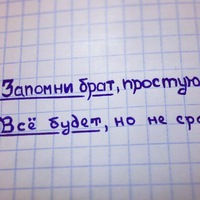
N = 1 s = 5 while (n < 61): n += 12 s += 2 print(s)
 0
0
 0
0
Ответы на вопрос
 Внимание! Ответы на вопросы дают живые люди. Они могут содержать ошибочную информацию, заблуждения, а также ответы могут быть сгенерированы нейросетями. Будьте внимательны. Если вы уверены, что ответ неверный, нажмите кнопку "Пожаловаться" под ответом.
Внимание! Ответы на вопросы дают живые люди. Они могут содержать ошибочную информацию, заблуждения, а также ответы могут быть сгенерированы нейросетями. Будьте внимательны. Если вы уверены, что ответ неверный, нажмите кнопку "Пожаловаться" под ответом.

Ответ:
15
Объяснение:
C++
#include <iostream>
using namespace std;
int main()
{
setlocale(LC_ALL, "RUS");
double n = 1;
double s = 5;
while (n < 61)
{
n += 12;
s += 2;
}
cout << s << endl;
}
 0
0
 0
0

The given code snippet is written in Python and it appears to be a while loop that increments the values of `n` and `s` until `n` is less than 61. Here is a breakdown of the code:
```python n = 1 s = 5
while n < 61: n += 12 s += 2 print(s) ```
In this code, the initial values of `n` and `s` are set to 1 and 5 respectively. The while loop continues as long as `n` is less than 61. Inside the loop, `n` is incremented by 12 and `s` is incremented by 2. Then, the value of `s` is printed.
The output of this code would be a series of numbers printed on separate lines. Each number is the value of `s` after each iteration of the loop. The exact output would depend on the number of iterations the loop goes through.
Please note that the code snippet you provided is incomplete and the purpose or context of the code is not clear. If you have any specific questions or need further clarification, please let me know!
 0
0
 0
0
Похожие вопросы
Топ вопросов за вчера в категории Информатика
Последние заданные вопросы в категории Информатика
-
Математика
-
Литература
-
Алгебра
-
Русский язык
-
Геометрия
-
Английский язык
-
Химия
-
Физика
-
Биология
-
Другие предметы
-
История
-
Обществознание
-
Окружающий мир
-
География
-
Українська мова
-
Информатика
-
Українська література
-
Қазақ тiлi
-
Экономика
-
Музыка
-
Право
-
Беларуская мова
-
Французский язык
-
Немецкий язык
-
МХК
-
ОБЖ
-
Психология
-
Физкультура и спорт
-
Астрономия
-
Кыргыз тили
-
Оʻzbek tili





























